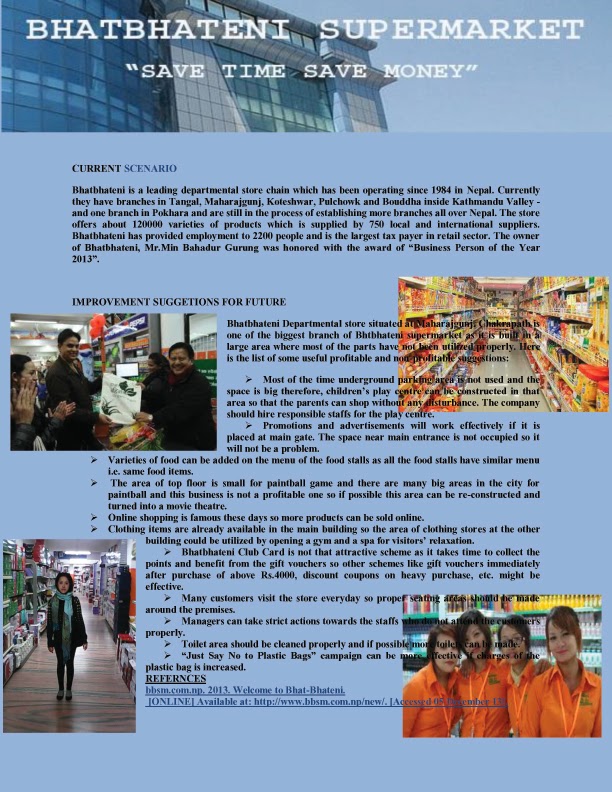WEEK 23
In your own words and using referenced quotes
describe what is meant by the term “strategic leadership”
A person or an
individual of a firm who carries out the overall responsibility to carry out
efficient and effective performances of labor and capital is known as the
strategic leader. Strategic leadership refers to the capability of the leader
to take overall decisions of the organization in order to deliver great value
over specified period and also manage the people of the firm. Vision and shared
values are the important factors that the strategic leader should have so that
the employees could take the minor decisions on their own without monitoring
and control of the leaders. This enables the leader to focus some more time on
other activities of the firm. (Paul J.H. Schoemaker, Steve Krupp, and Samantha Howland, 2013)
Identify two interesting similarities and two
differences between the 5 elements of Successful and Effective Strategic
Leadership model and the Transcendent Leadership Model
5 elements of Successful and Effective Strategic Leadership Model are as follows:
1.
Developing
and Communication the Organizational Purpose
2.
Managing
Human Resources and Organizational Decision
4.
Defining
and Delivering to the Stakeholders
5.
Sustaining
Competitive Advantage Over Time
3 elements of Transcendent Leadership are as follows;
1.
Leadership
of Self
2.
Leadership
of Others
3.
Leadership
of the Organization
Two similarities of these models are:
Benefit to the
stakeholder from both of the models as they are able to maintain both inside
and outside relationship in the organization.
Both the models
cope with the changes which happen in the organization and adapts according to
the changing environment which helps the firm to gain competitive advantage.
Two differences of these models are:
Transcendent
leadership model focuses on the goals, procedures, strategies, rules, etc. of
the organization whereas the Lynch model focuses more on the human resources.
Transcendent
leadership focuses on the leadership of the organization and self whereas lynch
model focuses only on organization’s leadership.
CASE STUDY: JEFF BEZOS
I think that the
leadership style of Jeff Bezos is more aligned to lynch model. I have mentioned
some of the facts to support my thought:
Ø In his interview
with Harvard Business Review Mr.Bezos said that he gives interview so that
customers will get chance to understand and know more about them, their operations
and purposes. In this way they develop and communicate their organizational
purpose.
Ø They keep their
customers’ and employees’ choice as their main priority and hire people who
understands the customers’ needs and preferences. In this way they manage human
resource and organizational resources.
Ø They have set
ethical standards by not burdening their customers with higher prices though
after the survey they know that they have to increase their price. They did
meaningful things like Kindle, Amazon web services etc. They are also clear
about how and what they advertise and do not cover up their shortcomings.
Ø They believe to
create a customer loyalty by satisfying them which automatically maximize the
free cash flow over the long term. In this way they define and deliver their
stakeholders.
Ø They have
sustained competitive advantage over time by doing best for their customer and
securing in a position for a long run.
Hence, all the
above mentioned points clearly prove that he has demonstrated all the characteristics
of Lynch Model but he has not demonstrated transcendent model as they are more
focused on human resource than leadership for others, self and the
organization.
References:
1. Paul J.H. Schoemaker, Steve Krupp, and Samantha Howland . (2013). Strategic Leadership: The Essential Skills. Available: http://hbr.org/2013/01/strategic-leadership-the-esssential-skills/ar/1. Last accessed 18/12/2013.
2. Beatty, K. (2010). The Three Strengths Of A True Strategic Leader.Available: http://www.forbes.com/2010/10/27/three-strengths-strategy-leadership-managing-ccl.html. Last accessed 18/12/2013
1. Paul J.H. Schoemaker, Steve Krupp, and Samantha Howland . (2013). Strategic Leadership: The Essential Skills. Available: http://hbr.org/2013/01/strategic-leadership-the-esssential-skills/ar/1. Last accessed 18/12/2013.
2. Beatty, K. (2010). The Three Strengths Of A True Strategic Leader.Available: http://www.forbes.com/2010/10/27/three-strengths-strategy-leadership-managing-ccl.html. Last accessed 18/12/2013
3. Tearle, R. (2011). Characteristics of
effective leaders. Available: http://www.changedesigns.net/public/team/team_strategy/Strategic-leadership.html.
Last accessed 18/12/ 2013.
4. Management study. (2013). Strategic
Leadership - Definition and Qualities of a Strategic Leader. Available: http://www.managementstudyguide.com/strategic-leadership.htm.
Last accessed 18/12/2013.
5. Callegarin, M. (2010). THE ART OF TRANSCENDENT LEADERSHIP.Available:
http://www.effective-actions.com/the-art-of-transcendent-leadership/. Last
accessed 18/12/2013.






